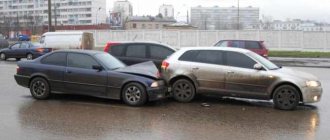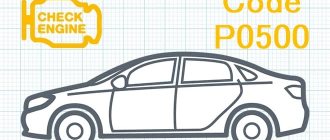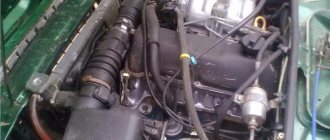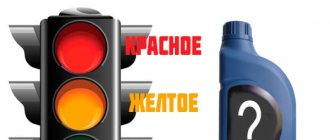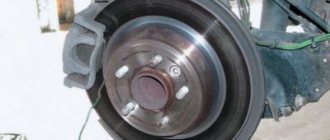Distance
- Three car lengths . Anyone traveling in urban areas must maintain a distance of at least 15 meters, or three car lengths.
- Half speedometer : for a safe distance outside of populated areas, pay attention to the speed of the car. In order to calculate a safe distance, divide by 2 the current speed shown by the speedometer. As a result, you will get the distance to other cars in meters. Example: At a speed of 70 km/h, you must keep at least 35 meters from the vehicle in front. Moreover, this applies to dry asphalt in the summer.
- Double distance : In case of poor visibility or bad road conditions, you should double the safe distance.
Distraction on the road
When we drive, we must be as attentive and focused on the road as possible. But unfortunately, we are often distracted by many things on the road, as a result of which our reaction while driving is reduced, which often leads to an accident.
For example, the driver’s main enemy is a mobile phone, smartphone and tablet. According to current legislation in our country there is a ban on the use of mobile devices while driving a car. But unfortunately, few people in Russia comply with this law.
But this ban was actually made for a reason. The fact is that, according to research, talking on a cell phone while driving a car distracts the driver and reduces attention. Including a mobile phone, the driver’s reaction is greatly reduced. For example, it has been officially established that a driver talking on a mobile phone while driving begins to behave like a driver driving a car in a state of mild alcohol intoxication. Why is this happening? The thing is that our brain is not limitless and cannot process too much information at the same time. As a result, when we talk on the phone while driving, our reaction decreases several times, which often becomes the cause of an accident. For example, due to the fact that the driver started to brake at the wrong time, which ultimately led to an increase in braking distance.
All of the above factors directly affect the final stopping distance when the car is braking. After all, all these things lead to an increase in the time to come to a complete stop, which ultimately leads to a longer braking distance.
Of course, in our article we did not indicate all the reasons why the braking distance may increase. In fact, there are a huge number of them. But we have indicated the most important factors that directly affect the braking distance of any vehicle.
84% of Russian drivers do not know how to calculate braking distance depending on speed, and only 12% of car owners can correctly assess the situation. Such conclusions can be drawn from the results of a survey conducted on the traffic police website.
State of alcohol or drug intoxication.
Driving while under the influence of alcohol or drugs actually also affects the final braking distance of the car. The fact is that alcohol or drugs reduce and slow down the driver’s reaction speed several times. Accordingly, all movements behind the wheel will be slower. Although this may not be noticeable from the outside, in fact, the reaction of a drunk driver when braking (and not only) will indeed be reduced. And on the road, as you and I know, everything is usually decided by a few milliseconds. This is why a drunk driver driving is very dangerous. Indeed, in the event of emergency braking, a driver in a state of alcoholic or drug intoxication will, if necessary, press the brake pedal with a delayed reaction. As a result, the car will travel an additional considerable distance before it starts to stop, which will ultimately add extra meters to the braking distance.
How to increase the intensity of deceleration
To minimize braking distance in different circumstances, the driver can use one of two methods. A combination of these methods would be best:
- Driver discretion. This method assumes the driver’s ability to anticipate dangerous situations and choose a safe speed limit and the correct distance. For example, on a flat and dry road, the Moskvich can be accelerated, but if the road is slippery and winding with a large flow of cars, then in this case it would be better to reduce the speed. Such a car will brake less effectively than a modern foreign car. It is also worth paying attention to what braking technique the driver uses. For example, in a car that is not equipped with any assistance system, such as ABS, pressing the brake hard all the way down often results in loss of traction. To prevent the car from skidding on an unstable road, it is necessary to use engine braking in a low gear and intermittently press the brake pedal.
- Car modification. If a car owner equips his vehicle with more efficient elements on which braking depends, then he will be able to increase the intensity of the deceleration of his car. For example, you can improve braking efficiency by installing better brake pads and discs, as well as good tires. If the car allows you to install additional mechanisms or even auxiliary systems (anti-lock braking, braking assistant), this will also reduce the braking distance.
When and how measurements are taken
Braking distance calculations will be needed when a vehicle is being examined after a serious accident (forensic examination), during technical testing of the car, and also after upgrading the braking system.
There are various online calculators with which the driver can independently check these parameters of his car. An example of such a calculator can be found at this link . You can use this calculator right on the road. The main thing is to have Internet access. A little later we will look at what formulas can be used to calculate this parameter.
Tires.
Car tires are also an important factor that affects the final braking distance of a car. Firstly, this length of braking distance depends on the degree of wear of the rubber tread, as well as on the brand of tires. Naturally, the more expensive the brand and model of tires, the more and more reliable it provides the car with grip on the road. In addition, on a wet road, braking distance also depends on the condition of the tire tread and its specification itself. If the rubber is sufficiently worn, the tire tread depth will be shallow, which will lead to insufficient drainage of water from the tires. As a result, road grip will decrease, and this in turn will affect the braking distance of the car when braking.
First big review of the new 2022 Mercedes E-Class station wagon in Russia
Also, don’t forget about tire pressure, which must be maintained in accordance with the car manufacturer’s recommendations. Remember, friends, that low tire pressure (or too high) will lead to an increase in braking distance on any road. Therefore, it is very important not only to monitor the condition of the tires, but also to replace them with new ones in a timely manner, periodically checking the pressure in them.
Technical condition of the vehicle.
Of course, any car should only go on the road in acceptable, good technical condition. To do this, it is necessary to periodically carry out scheduled diagnostics of all important vehicle systems, as well as at the same time carry out timely maintenance and necessary repairs.
Please remember that the technical condition of the car directly affects its braking distance in the event of emergency braking.
For example, bad brake pads, brake rotors or drums, or old brake fluid can cause your vehicle's stopping distance to double.
Remember also that in addition to the technical condition of the vehicle, you must keep the car clean. For example, a dirty windshield may cause you to miss (or not notice) an obstacle on the road and press the brake pedal too late. As a result, the braking distance of the car can increase significantly, which naturally can lead to an accident.
Dirty headlights may also not illuminate the road enough at night. In this case, you and your friends run the risk of simply not noticing the danger on the road in time and reacting to it too late, thereby increasing the braking distance of your car.
How to brake on a motorcycle?
Braking correctly on a motorcycle is quite a difficult task. You can brake with the rear wheel, the front wheel, or both, skid or engine. If you brake incorrectly at high speeds, you can lose your balance. In order to calculate the braking distance of a motorcycle at 60 km/h, we also substitute the data into the formula. Taking into account the different braking coefficient and friction coefficient.
Motorcycle braking distance
- Dry asphalt: 23 - 33 meters
- Wet asphalt: 35 - 46 meters
- Mud and snow: 70 - 95 meters
- Ice: 95 - 128 meters
The second indicator is the braking distance when the motorcycle is skidding.
Any vehicle owner should know and be able to calculate the braking distance, and it is better to do this visually.
It should be remembered that if a traffic accident occurs, by the length of the skid that will remain on the road surface, you can determine the speed of the vehicle before colliding with an obstacle, which can indicate that the driver has exceeded the permissible speed and make him the culprit of the incident.
Speed.
As you can see above in the picture and in the table itself, high vehicle speed results in longer braking distances. But in addition to the speed itself, as you can see, the speed of your reaction before you press the brake pedal also plays an important role. On average, most drivers have approximately the same speed of reaction to an emergency situation on the road when making a decision to brake. As we can see from the table, the higher the speed, the longer the distance traveled until the very moment we press the brake pedal. And this takes into account the fact that the speed of our reaction does not change.
Important to know: How to check brake fluid
This is a compelling argument to encourage drivers not to violate the speed limit. This is especially necessary in populated areas within the city. This is why many cities have speed limits of 40 km/h.
Concept of car braking distance
Even if a professional driver is driving a car, a situation may always arise on the road when it is necessary to stop the vehicle as quickly as possible:
- sudden appearance of a person or animal on the road;
- vehicle malfunction;
- violation of traffic rules by another driver, which leads to the creation of an emergency situation;
- unforeseen circumstances: uneven road surface, obstacle (fallen tree, stone), etc.
To stop the car, the driver uses the brake pedal, activating its braking system.
The braking distance of a car is the distance covered by the vehicle during the period of time from the moment the braking system is activated until the vehicle reaches a speed of 0 km/h.
Possible consequences of collisions
According to the results of technical tests, a strong impact of a moving car on any obstacle corresponds in strength to a fall:
- at 35 km/h - from a 5-meter height;
- at 55 km/h - 12 meters (from the 3rd-4th floor);
- at 90 km/h - 30 meters (from the 9th floor);
- at 125 km/h - 62 meters.
It is clear that a collision of a vehicle with another car or other obstacle, even at low speed, threatens people with injury, and in the worst case, death.
Therefore, in the event of emergency situations, it is necessary to do everything possible to prevent such collisions and perform a detour around the obstacle or emergency braking.
Road conditions.
You also need to know that on a wet or icy road, the braking distance certainly increases. The fact is that on a slippery surface, the car’s grip on the road is greatly reduced, which leads to an increase in braking distance when braking.
For example, in icy conditions the braking distance of any car can increase tenfold!

